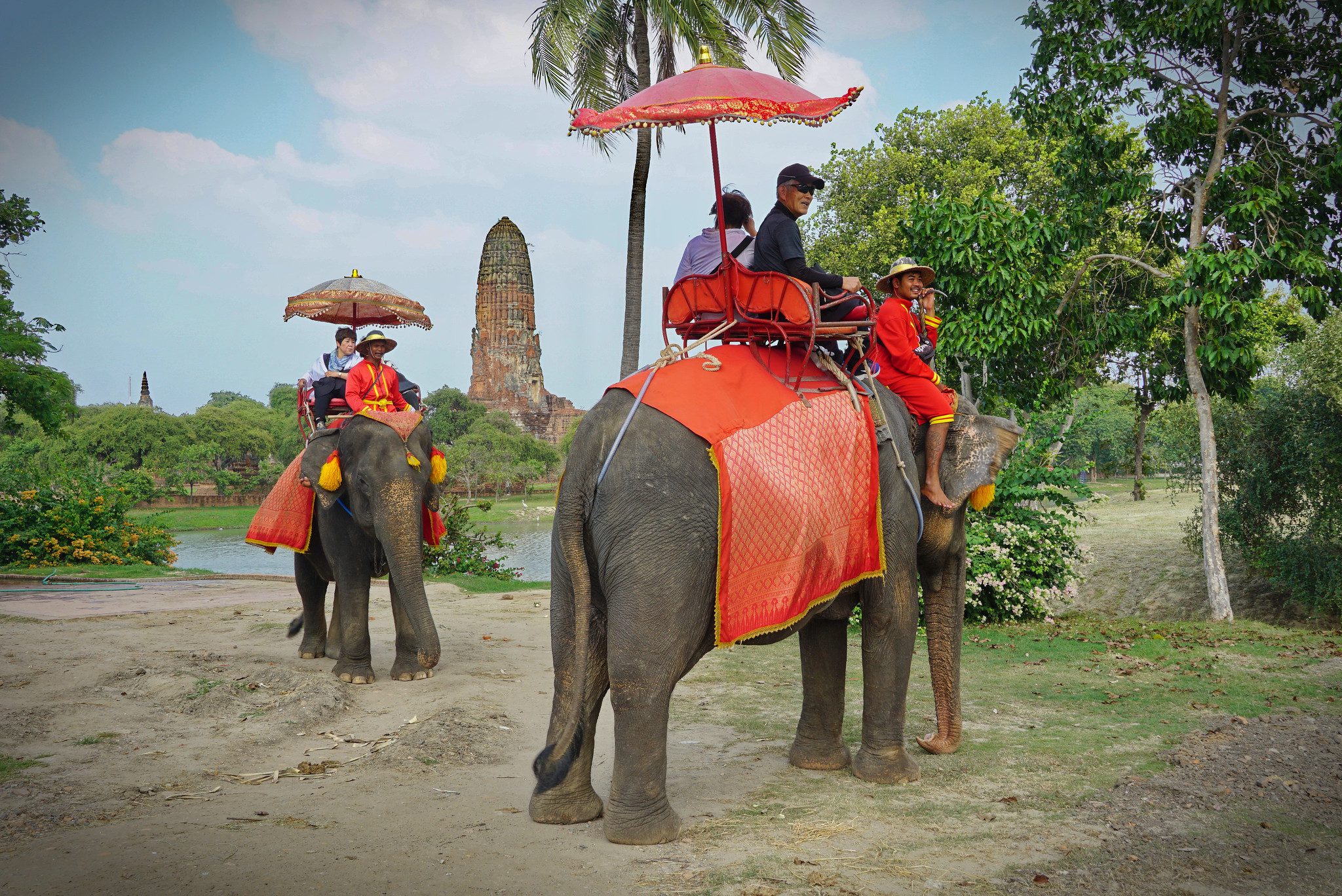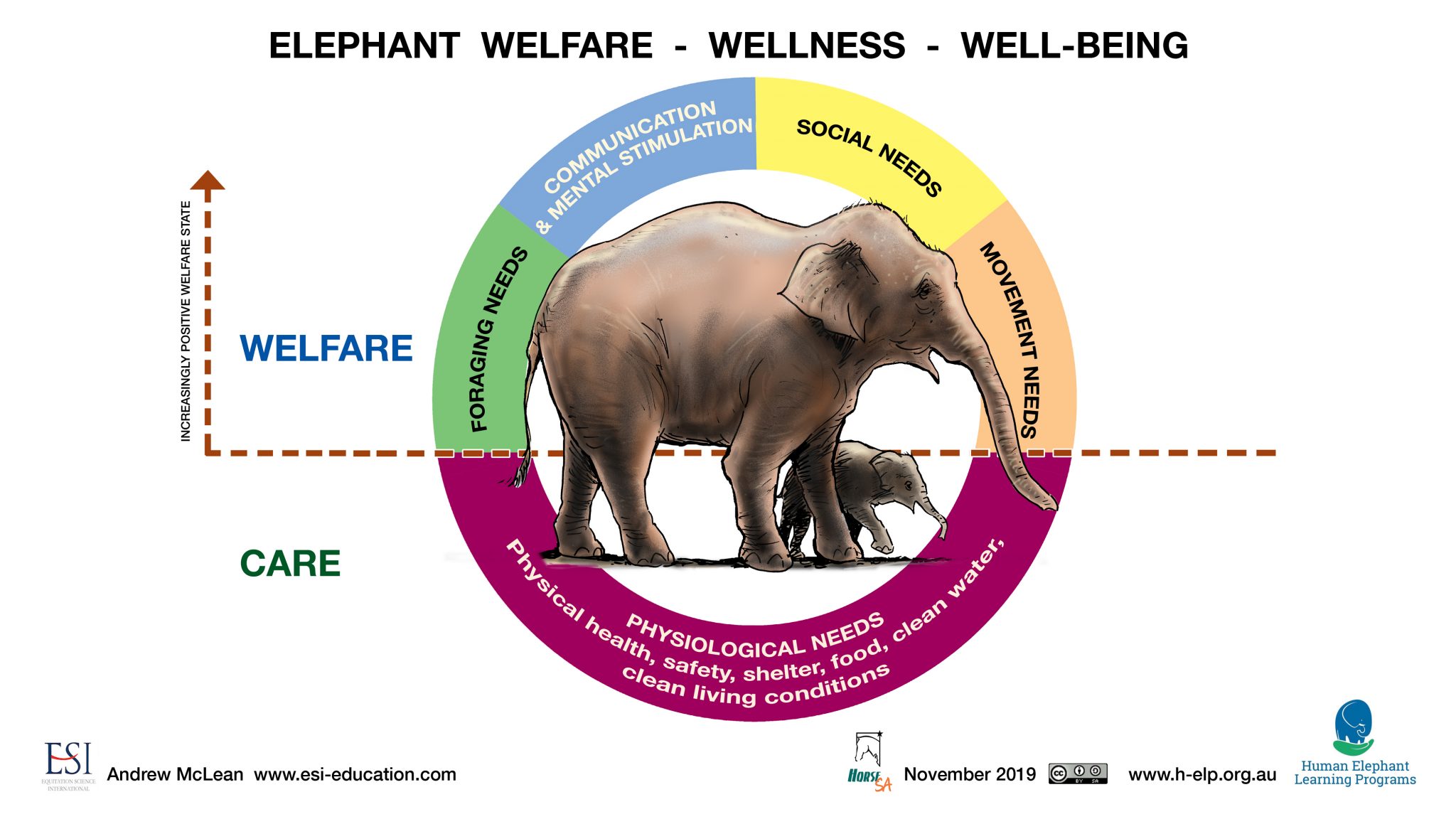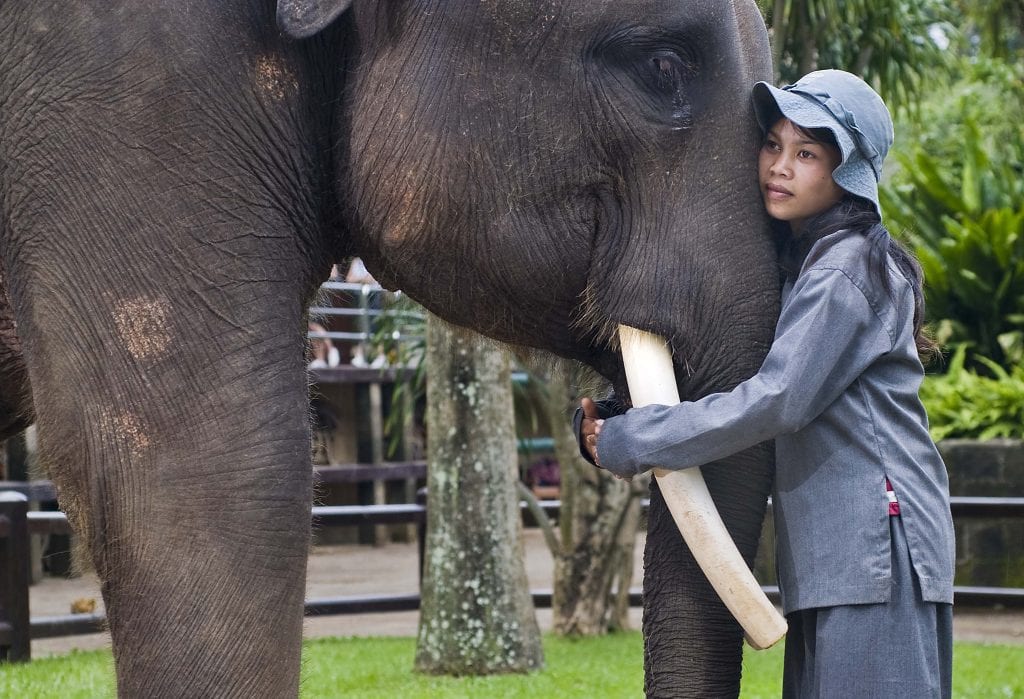Skift Take
Given the complexity of Asian elephant tourism, it's natural for rifts to form. A lot of people want to do the right thing, but there are many issues that are still up in the air — and a lot of business is at stake.
Elephant Rides on the Wane. How Ethical is the Elephant Sanctuary You’re Visiting? In Thailand, You Can Ride an Elephant. But Should You? These recent news headlines might lead the casual reader to think that all is well with Asian elephant welfare. Add to that, there is a growing number of travel companies that have discontinued selling venues that offer elephant rides. One would think that the cause is making strides and awareness is growing in the battle to end pachyderm abuse.
Yet nothing could be further from the truth. Far from a comfortable state where everyone is collaborating with one another to protect these highly intelligent, social animals, the world of Asian elephant tourism is wracked with jumbo divisions and confusion.
Broadly, two polarizing camps have emerged, both claiming to be science-based and not driven by emotions or self-serving interests. Whether future generations of tourists will still ride Asian elephants will be determined by which of the two camps is stronger, or whether they are able to come together and chart a common path for Asian elephant tourism.
On the one hand is the camp that calls on travel companies to stop selling venues that offer elephant rides and is working toward a “no touching” paradigm where tourists can only observe elephants and not ride, walk, bathe, or feed them, which are experiences that are common at elephant venues today. The thrust of its argument is that in order for those activities to be possible, an elephant would first have to have been broken with cruel measures.
The other camp, however, refutes this. It cites evidence-based research that shows that you can train an elephant to be ridden in the most ethical way, and that riding does not harm elephants if the payload, hours per day, days per week, and such are responsibly managed. Boycotts such as stopping sales of elephant venues do more harm than good to elephant conservation and a long chain of local businesses and communities that rely on them for income, according to this camp. Supporters question whether boycotting an entire industry aligns with the ethos of responsible tourism. What the industry needs, this camp argues, is a reform of training techniques and camp management — and the establishment of international accreditation and guidelines.
So to put a complex issue into a simplified sentence, one camp is changing the travel demand, and the other is changing the supply.
This tug-of-war is impacting tourists, elephant camps, tour operators, online travel agents, inbound agencies, elephant lodges, destinations, and, of course, the reason for all this, the captive elephants in tourism.
How did it come to this?
Why Thailand Gets the Most Scrutiny
First, a brief history of Asian elephant tourism and why it centers on Thailand, which has received the most reputational damage for it.
In Asia, elephants are revered as they represent the divine. They also symbolize good luck and happiness, and, moreover, they are admired for their strength, memory, intelligence, and longevity. Communities across Asia seeking blessings still make offerings to elephants in religious ceremonies at temples or major festivals.
Elephants have gone to battle to fight wars on behalf of the ancient kings of Siam, played a pivotal role in the construction of Cambodia’s Angkor Wat, and to this day clear forests and carry timber in the lucrative logging industry.
The population of Asian elephants, of which there are three sub-species — the Indian elephant, the Ceylon elephant, and the Sumatran elephant — is declining due to deforestation, loss of natural habitat, and poaching for ivory. The number of wild elephants in Asia is now around 38,000–52,000, excluding the population of captive elephants that are assumed to live in captive or semiwild conditions and are typically used for logging, village work, tourism, or temple purposes, according to World Animal Protection.

India has by far the largest number of elephants in Asia. There are 30,711 wild and 3,000–4,000 captive animals. Around 350, a relatively small number, are used in tourism, according to World Animal Protection’s study, Taken for a Ride, released in 2017.
In contrast, Thailand has by far the highest number of elephants in tourism, close to 2,200 (see chart at left), which is roughly twice as many as elephants in tourism in India, Sri Lanka, Nepal, Laos, and Cambodia combined.
In addition, Thailand has more captive elephants (4,400) than wild elephants (2,500–3,200), according to the study, which said it surveyed 220 elephant venues in the six Southeast Asian and South Asian countries from late 2014 to mid-2016.
Captive elephants are primarily sourced from the wild and through breeding, with commercial gain as the prime motivator, it said. The study quoted a report by the wildlife trade monitoring network, Traffic, that found between April 2011 and March 2013, 79–81 wild elephants, mostly from Myanmar, were illegally captured for sale to the Thai tourism industry.
Revered yet Abused?
To some, it does not make sense that an animal that is revered is also abused.
Thailand is considered the cradle of elephant camps, which multiplied when the government banned teak logging in 1989, putting the mammals that cleared forests and carried timber out of a job and leaving their owners without an income.
Alternative work for the elephants had to be found. They can’t just be slaughtered because of the cultural and religious history, or released back into the wild because of limited forests, to name two factors.
But it’s expensive to keep them. Elephants consume 150–300 kilograms of food a day, and it costs about $18,000 a year to look after a single elephant, according to Thailand-based Minor Hotels’ Golden Triangle Asian Elephant Foundation. That’s $50 a day — a dinner feast for a small village in the provinces.
Elephant rides seemed far less back-breaking than logging, hence the widespread birth of elephant camps that offer rides in the kingdom. Additionally, tourism to Thailand was at the cusp of growth, fueled by the first Visit Thailand Year 1987, two years before the logging ban.
Elephant riding in camps or lodges graced the cover of many overseas tour operators’ brochures; it was, for many Europeans and Americans, a primary reason to visit the Far East.
It’s hard not to love an elephant. Those droopy eyes. The thin flappy ears that are incongruous with the thick, rough supersize body. The unique trunk. The slow gait that belies kick-ass strength. Who does not love a gentle giant? Given half the chance, lots of people would ride one.
A survey by World Animal Protection in 2016 found that 40 percent of tourists from the top 10 nationalities traveling to Thailand said they had been on or were planning to ride an elephant — the equivalent of up to 12.8 million elephant rides, it said — an increase from 36 percent in the same survey conducted in 2014.
But hard lobbying to change tourist behavior is paying off. World Animal Protection’s fresh survey in January shows that the percentage of people who find elephant riding acceptable has gone down to 41 percent, compared with 44 percent in January 2017.
Changing the Travel Demand
Efforts to change tourist behavior toward elephant riding can be traced back to 2010, when World Animal Protection conducted research on the welfare of animals used for entertainment in Thailand. The study, Wildlife on a Tightrope, was funded by The Intrepid Foundation.
That same year, the animal rights group also launched a public campaign with TUI Netherlands to expose hidden cruelty behind elephant rides and shows. TUI Netherlands became the first tour operator to stop featuring venues offering elephant rides. A few others started to follow, including Intrepid Travel Australia in 2013.
“It was a brave decision. Southeast Asia represented 35 percent of our global revenue,” recalled James Thornton, CEO of Intrepid Group.
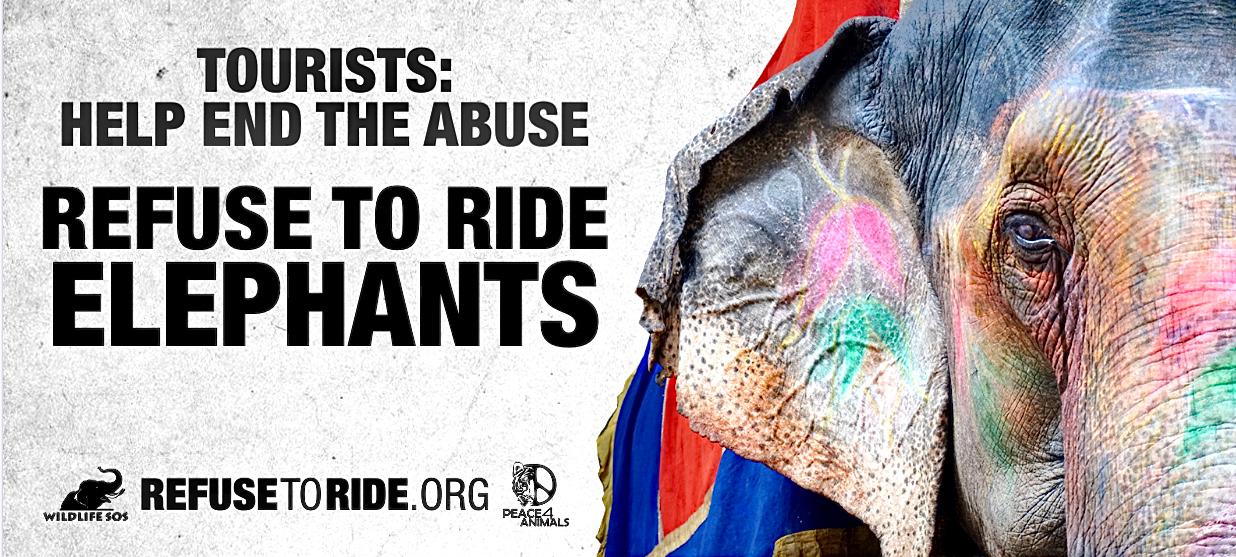
In another significant point in the lobby in 2013, the Association of British Travel Agents launched the first guidelines on elephant tourism. The group has more than 600 tour operators and 2,300 travel agencies as members and is heeded by not just the UK travel trade but Western European markets as well.
At the time of writing this article, the Association of British Travel Agents is tightening the 2013 guidelines. Whereas activities such as elephant riding or bathing are currently “discouraged,” these will soon be deemed “unacceptable,” which constitutes a ban even if it’s a voluntary one.
The revised guidelines are expected to be released by the end of this year, Clare Jenkinson, senior destinations and sustainability manager, Association of British Travel Agents, told Skift.
World Animal Protection, meanwhile, has kept up its lobby on changing tourist attitudes via the travel companies channel. Together with companies including TUI Group, DER, Intrepid, The Travel Corporation, and G Adventures, it formed in 2016 the Coalition for Ethical Wildlife Tourism with two key objectives: Proof demand for and support observation-only tourist attractions, and drive industry standards and government legislation to better protect wild animals.
Then in 2017, World Animal Protection’s Taken for a Ride study “for the first time showed the scale and intensity of elephant suffering across elephant tourism hotspots in Asia,” said Julie Middelkoop, who leads World Animal Protection’s global campaign, Wildlife — Not Entertainers.
“It showed that in just five years, there has been a 30 percent increase in the number of captive elephants at Thai tourist attractions. Another key finding is that 77 percent of the almost 3,000 elephants used at tourist venues across Asia live in ‘severely inadequate conditions’, with a clear correlation between those conditions and the activity being offered to tourists. Essentially, almost all the elephants living in severely inadequate conditions were found at venues offering elephant rides,” she said.
Skift interviewed Middelkoop at ITB Asia in October where World Animal Protection had a booth as part of its efforts to engage Asian travel companies on its vision of elephant-friendly tourism.
As of August, 250 travel brands worldwide have committed to World Animal Protection not to sell or promote elephant entertainment, rides, or shows. This now includes major online travel players including Booking.com, TripAdvisor, and Airbnb. World Animal Protection’s China office has enlisted 15 Chinese companies to date, including Caissa Tourism Group and Qyer.com, said Zheng Yu, World Animal Protection’s campaign manager in China.
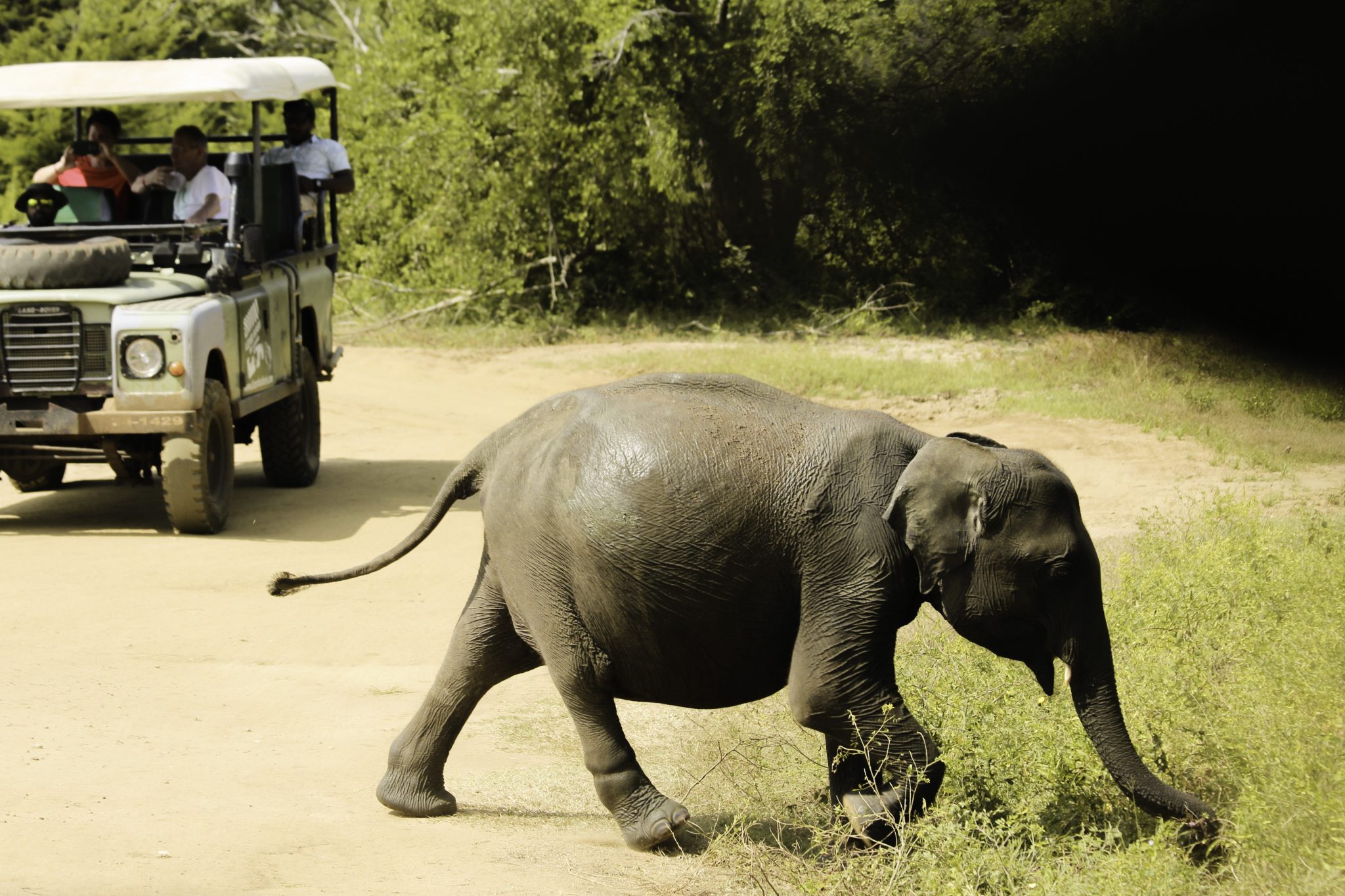
Other animal rights groups go directly to consumers. Most recently, Peace 4 Animals and Wildlife SOS jointly launched a campaign in Jaipur, the epicenter of elephant riding in India where they said more than 100 elephants are enslaved and exploited to carry tourists up to Amer Fort. Since November, Refuse to Ride messages have been distributed across billboards, auto rickshaws, and print advertising in Jaipur and digital media throughout the world.
Cambodia, meanwhile, is stopping elephant rides at Angkor Wat, effective early 2020. Apsara, the authority that protects the Angkor Archaeological Park, has so far moved two of 14 elephants that are used to ferry tourists around at the park to a nearby community forest; the rest will be moved by early 2020.
Western Take on an Asian Issue
But where is the Asian voice in all this? Criticisms have been leveled that the voice on elephant tourism has been richly Western, whereas the Asian camp owners, Destination Thailand, Asian elephant conservationists, and elephant foundations, to name a few stakeholders, have stayed silent until only recently.
The 250 travel brands that have pledged to stop sales are also predominantly from the Western markets where millions of people through the years have already ridden an elephant. Meanwhile, the market composition for Asian destinations has changed, with millions of Asian tourists forming the bulk of visitors. Like flying shame, which hasn’t stopped flying, elephant-tour shame hasn’t stopped riding as millions more Asians travel.
The point is, elephant rides will continue to exist. Moreover, “you don’t change 4,000 years of elephant culture overnight,” said a source on the condition of anonymity.
“We may be approaching reason from the aggressive and arrogant approach of Western animal rights organizations, which in my opinion do not always see the elephant situation in the same way as people working with the animals,” said the source.
“An organization like World Animal Protection must raise some $60 million a year, and you don’t get that kind of money with a step-by-step approach — you need to be radically critical and expose whatever cruelty you can find or even claim,” said the critic, pointing out that prime-time commercials run by World Animal Protection in the West to raise public awareness and donations couldn’t come cheap.
“Other animal welfare organizations with a long-term perspective believe that a lot of improvements can be obtained in the elephant world, but we also realize that intended cruelty is rare. Just the price of an elephant, $20,000 to $40,000, ensures that you will care for your animal.”
But the Taken for a Ride study said a high price on captive elephants in Thailand serves as a strong incentive for people to capture wild elephants and launder them across the border.
Another incentive, it pointed out, is that elephant camps are a lucrative business with one of the highest margins in travel. It estimated that a venue with 50 rented elephants (elephants are often rented from individual owners), welcoming 500 visitors a day at the price of $33 (1,000 baht) per person, earns $441,166 per month, versus total expenditure of $164,706 (excluding supplies, maintenance, and marketing).
A Growing Asian Voice
Remaining silent is becoming untenable for Asian elephant specialists, vets, researchers, camp managers, and conservationists who came together in 2015 to form the Asian Captive Elephant Working Group.
“We recognize the urgency to proactively and with sound scientific knowledge address the current situation of elephants in tourism in ASEAN countries,” it said.
Dr. Taweepoke Angkawanish, a respected elephant vet in Thailand and a member of the working group, told Skift, “In my view, bans are more violent for elephant welfare improvement.
“Training is the important issue for captive elephants, especially in areas such as mahout-ship, elephant health, allowing elephants to perform natural behavior and social interactions whenever there’s a chance, and giving them a supply of food, drink, shelter, and resting time.
“Jobs such as riding or logging do not matter if elephants get the options above.”
The Tourism Authority of Thailand is waking up to the need to address the bad rap Thailand has received from the Western markets. At World Travel Market in November, it held a roundtable, Elephant’s Well-Being and Thai Community.
The tourism body said as the next step, it will invite a group of stakeholders, animal welfare foundations, and media to Thailand “to continue the discussion and set in motion a more universal set of standards that benefits everyone — elephants, their mahouts, elephant business owners, (inbound travel agencies), and tour operators.”
“The goal is to ultimately educate consumers on how to have the most responsible and rewarding elephant experience while on holiday in Thailand,” it said.
Pacific Asia Travel Association’s director of sustainability and social responsibility, Graham Harper, lauds the Tourism Authority of Thailand’s “new commitment” to tackle issues surrounding elephant tourism.
“The Tourism Authority of Thailand is not an elephant expert, but as I understand it, in light of its 60th anniversary next year, they want to ensure that the elephant remains a proud symbol of Thailand, that negative Western press is not taking away the good things that are being done in Thailand for elephant welfare,” said Harper.
“The country’s done an incredible amount of work — they’ve set up hospitals (for elephants), mobile elephant clinics, microchipping every captive elephant, and other elephant welfare initiatives.”
Added Harper, “We (Pacific Asia Travel Association) believe that this is an Asian situation, and it is problematic for Westerners, especially those who have never even visited an elephant camp, to brand an entire industry with a blanket statement. You need to look at the historical and cultural significance and the huge economic impact that marketing campaigns, pledges, and bans can have on people who, quite honestly, may be living marginally. What may seem good in London does not necessarily work for an elephant village in Northern Thailand.”
Daniel Turner, director, Animondial, which provides “impartial advice and practical guidance” to companies in making the right decisions for their business and to better protect animal welfare in the supply chain, also believes boycotts can cause more harm than good, as he wrote in this Animondial blog.
“The topic of elephants in tourism is a complex one and, with more stakeholders than ever before, the status quo cannot be an option. We need to begin to see meaningful change, and I believe we are entering a period of opportunity, driven forward by Tourism Authority of Thailand’s new commitment. The boycotts and the focus on individual elephant activity is not going to bring meaningful change,” said Turner, who helped the Association of British Travel Agents draft its animal welfare guidelines.
Different Arguments
There are now different takes on the most fundamental issues surrounding elephant tourism. Here are two examples of the most controversial ones:
On “breaking in,” “crush,” or “Phajaan” training:
World Animal Protection’s Taken for a Ride study: “The process of humans gaining control over the elephant starts early on in their life in captivity and is often referred to as ‘breaking in,’ ‘crush,’ or ‘Phajaan.’ All wild-caught and captive-bred elephants undergo such cruel training in their early years if they are to be used for activities such as riding and shows, but also where visitors may closely interact with the animals. This process has been handed down from generation to generation throughout the history of captive elephants and remains an extremely cruel process.”
Asian Captive Elephant Working Group: “Every captive elephant must have some training to allow it to understand common verbal commands and to accept veterinary treatment. To not train an elephant under human care would be irresponsible. In the days of wild capture, the elephant was often tamed using very harsh techniques, as this wild creature had no previous experience with humans. Old videos labeled as ‘Phajaan’ training can be found on the internet and show cruel training methods using a crush to confine the animal and ‘break its spirit.’ But such methods are thankfully much less common today.
“In Northern Thailand, ‘Phajaan’ is in fact not a training method at all, but a spiritual ceremony associated with the training; similar ceremonies known by other names are performed throughout Southeast Asia. It is carried out before training to ask the spirits to protect the people and the elephant…Today, captive-born elephants grow up with and around humans and often begin their training soon after birth. Attitudes are changing and more owners are recognizing the benefits of using more humane and ethical training methods.”
On the use of hooks, also called a guide or bull hook:
Association of British Travel Agents: “A study shows that 60 percent of 122 elephants surveyed were controlled by hooks, and that this was associated with a higher frequency of wounds. Another study found that 85 percent of 33 camps studied used hooks, and that other tools such as knives, nails, and slingshots were also used.”
Asian Captive Elephants Working Group: “In a free contact situation, where elephants and humans share the same space, a hook should be carried at all times for safety. The tool was developed over thousands of years to allow a mahout to get an elephant’s attention in an emergency (e.g., sudden loud noises or when elephants fight) or potentially dangerous (potential ingestion of chemical poisons, litter, fallen electric wires, et cetera) situation…Not carrying a hook is dangerous for both the elephant and any people around. Likewise, using an inappropriate tool, like a machete (knife) or spear to bring an elephant under control can be dangerous and cause harm to the elephant. Some mahouts carry nails in their pockets, which is completely inadequate for controlling an elephant but allows them to give the impression they are using voice alone — commonly done for aesthetic reasons only. The advantage of the hook is that it extends the reach of the arm to allow a safer way for the mahout to signal a command to an elephant.”
The Mother of all Questions
The key question has to be: Is riding an elephant bad for elephants, or is it the training techniques and living conditions that make riding bad? If it’s the latter, why ban elephant rides instead of changing the training techniques and living conditions?
A recent 12-month academic study looking at the stress indicator level (fecal glucocorticoid metabolite) in captive elephants conducted by researchers from the Smithsonian Conservation Biology Unit, Chiang Mai University, and National Elephant Institute Thailand showed that captive elephants interacting with mahouts and performing daily exercise through riding had lower stress levels than elephants in passive viewing camps.
Elephants in the study that undertook riding had better body score conditions and were less likely to be obese compared with the elephants that did not undertake riding activities. The elephants engaged in riding received both physical and mental stimulation, positive welfare attributes that the elephants at the passive viewing camp did not receive.
Dr. Andrew McLean, co-founder of the Human Elephant Learning Programs, an Australian organization that aims to improve the welfare of working elephants in Asia through a systematic approach and safe alternative to traditional submission-based methods, sees no problem with riding.
“My feeling about the riding is that if elephants were given limited hours and a limited payload, maybe only two people, limited numbers of days a week and weeks in a year, et cetera, and they are managed well and looked after the best way possible, including improving their saddlery (our project is also investing in that), I see no problem with riding elephants and I say it’s no different riding horses,” he said in this interview with the Pacific Asia Travel Association.
“Certainly, we can train the elephants to be ridden, in some parts of Asia we work with elephants in the middle of the jungle and they’re not restrained by ropes or chains, and yet the elephants are there voluntarily, and they will come back for each session over the course of our workshops. They don’t have a problem with a human on their back directing them, provided it is done ethically. When we’re having a break for a cup of tea, they hang around or move off into the forest, and then they come back. It’s certainly not a horrible experience for them, but a violent foundation training as we still see in many parts of Asia, where the elephants are very coercively restrained and hurt until they don’t react anymore, that has got to stop. And if it doesn’t stop then elephant riding ought to be banned.
“But if we are serious about welfare, I think we should be much more intelligent in the way we look at elephant camps that are proud to say we don’t ride elephants, and yet in many cases, the elephants have very bad diets and suffer internally because of that. Animals like elephants should be eating a lot of roughage, so feeding sugar cane and bananas to excess is very bad for their digestive system. If elephants don’t get enough exercise — they need between seven and 13 kilometers a day — that’s also bad for welfare. If they don’t have the ability to socialize with other elephants that’s bad for welfare too. We have done studies on this with horses where we’ve actually isolated all the elements of human interactions with horses and what we’ve shown is that it is the same thing. A well-trained ridden animal with all the other things attended to, such as the proper diet, not overfeeding sugar, plenty of exercise, and plenty of ability to socialize is a much better, happier animal.”
But can elephants that have been subject to abuse be retrained? In an interview with Skift, McLean said, “Yes, an elephant can be retrained at any age, it just takes a little bit longer with older animals that have developed alternative responses to stimuli. This is because the developed neural pathways are more consolidated in an older animal, so to extinguish them or rather divert them takes more time and much more attention to the precision and error-free characteristics of the training process. In fact if this were to be done, the PTSD (post-traumatic stress disorder) symptoms that characterize a disturbed elephant that has had a punishment-based training in the past can eventually disappear. However it is very long process, and it requires the people who deal with the animal to be knowledgeable in training.”
Changing the Supply
While elephant tourism has taken up an inordinate amount of time and attention in the industry since 2010, little progress has been made on accreditation.
A few Asian inbound travel operators such as Khiri, Buffalo, and Exo in 2015 initiated an audit of the camps they were featuring, outsourcing the work to Netherlands-based Travelife for Tour Operators and Travel Agents, which, by the way, is different from Travelife for Hotels and Accommodations administered by the Association of British Travel Agents.
This seeded a proper set of criteria for an international accreditation of elephant tourism camps. Among the key individuals behind it were Naut Kusters, director of Travelife for Tour Operators and Travel Agents, Nicolas Dubrocard of Wild Asia, and captive elephant researcher Dr. Ingrid Suter, with the guidelines done in consultation with the Asian Captive Elephant Working Group, Chiang Mai University, and the Pacific Asia Tourism Association.
Aside from the initial “scans” — not audits — of around 15 camps done for the Asian inbound operators, not much progress has been made on real accreditation.
Travelife is now in discussion with several parties on how it should proceed with audits, Kusters told Skift.
Meanwhile, Suter has broken away from Travelife and set up a company called Asian Captive Elephant Standards in January, with Dubrocard serving as an audit and accreditation advisor. It has to date audited three camps, based on 190 strict criteria independently validated by international specialists in elephant management, vet care, and training.
The three camps are: Lao Elephant Conservation Center in Sayaboury, Laos; Mason Elephant Lodge in Bali, Indonesia; and Siam Niramit, Phuket, Thailand.
Suter guesses there are probably 350–400 elephant camps in Southeast Asia, around 250 of them in Thailand, up from 223 in 2017. She said there are many camps that want to be audited.
“There’s a lot of camps out there doing really wonderful stuff with their elephants. Their elephants are kept in such good conditions — I have seen it for myself. These camps should be supported and motivated to do the right thing, then the other camps will see this behavior and will follow suit,” she said.
Instead of tour operators paying for the audit, as with Travelife previously, the camps themselves bear the costs.
“It’s 2019. These people are running businesses with elephants. They have a duty of care and (cannot) expect handouts anymore,” said Suter.
“If you’re making money from these elephants, then it’s your responsibility to treat them well. And that’s how we work. We don’t accept donations, government money, or any money from any third parties. We deal directly with the camps. Having said that, payment doesn’t mean that you’re going to get accredited because our integrity and the (elephant) standards are on the line. Camps also have to keep applying on an annual basis,” said Suter.
Audit costs might be about $600 to up to $2,000 depending on the size of the camp and number of elephants.
Nigel Mason, owner of Mason Elephant Lodge, is more than willing to pay for the audit.
“There are hundreds of like-minded animal welfare people like us who are working with elephants to save them from extinction and give those displaced by deforestation a hope of a better life in an environment that is suitable for their needs, rather than let them die in the captive camps in Sumatra,” he said.
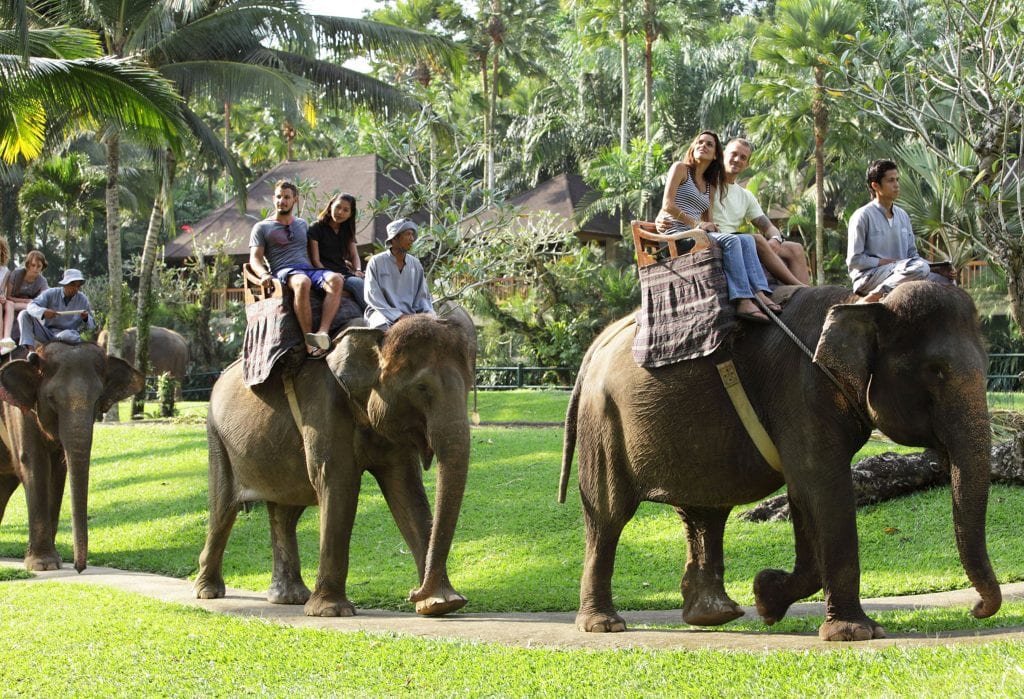
“Elephants are far stronger than horses, and a chair on an elephant’s back with two people and a mahout weighs only 7 percent of an elephant total body weight, whereas a saddle and rider on a horse weighs more than 17 percent of its weight. At our park we put 20 centimeters of padding under that seat and hence the seat itself never touches the elephant’s body. There have been numerous studies regarding riding elephants, and the truth is that elephants actually enjoy being ridden and it has been proven to be extremely good for their health,” he added.
Meanwhile, Suter said she is well aware that Asian Captive Elephant Standards has been accused of promoting elephant riding.
“We know that we come under a lot of fire from NGOs (non-governmental organizations) and animal welfare groups, et cetera, for promoting riding, bathing, contact with elephants. It’s never our intention to promote these things either. But they exist. There are thousands upon thousands of people each day who want to ride an elephant; it’s not going to go away tomorrow.
“So you’re looking to transition the industry (to no contact), but in the interim this is happening, and if it exists, we have to make sure it’s been done in the right manner. Let’s make sure the elephants that are performing elephant riding right now are being treated really, really well, that’s where I’m coming from,” said Suter.
Transitioning a Whole Industry
World Animal Protection meanwhile has come up with guidelines for elephant-friendly venues covering 12 broad areas including elephant acquirement, transparency of origin of elephant, captive breeding, economic breeding, handling of elephants, and so on. It groups venues under three categories, Elephant Friendly, Transitional, and Red Line. However, a list of only 16 best practice elephant venues in Asia is available.
More importantly, the organization has now produced a model of what it considers elephant-friendly, in the form of ChangChill, a camp based in Chiang Mai, Thailand.
Formerly the Happy Elephant Valley, ChangChill reopened recently after a two-year reorientation to become a camp that stops visitors from directly interacting with its elephants.
The transition allows its six resident female elephants the freedom to roam the valley, graze, and bathe in the river, mud, and dust while socializing with each other.
Visitors are no longer able to ride, bathe, or directly feed the elephants. Instead, they can admire the elephants from the new observation deck overlooking the venue’s valley.
World Animal Protection’s Middelkoop said a second Thai elephant camp in Koh Lanka has been transitioned and will reopen in the week of December 16 under a new name, Following Giants.
And in a bigger project, the animal rights group is creating a business plan to transition a whole elephant tourism community in Nepal to become a high-end, observation-only destination. Not only that, the project aims to prove that observation-only venues can be hugely profitable, said Middlekoop.
Sauraha, a village near Chitwan National Park, has around 60 elephants, the highest concentration of captive elephants in the country managed by 30–35 owners through a collective.
CoME TOGETHER
Most people today and in the future would probably agree that ideally, elephants should be released back into the wild. If that’s not possible, they should be “free” in the sense of having no tourist-riding duties or having to bathe with silly tourists who splash water on them. But reforestation will not happen. Neither will turning back the clock on tourism or on communities whose livelihoods depend on elephant tourism.
Transitioning the majority of camps to a no-touching policy will take a long, long time — if it happens at all. Moreover, to be fair, for every single research that says riding an elephant is bad for elephants per se, there’s another research to counter it. How does that make those tourists who desire to ride an elephant feel?
In the end, proper training and international accreditation — themselves an arduous process — and a model that shows what the future can be in the form of a profitable observation-only elephant camp, are all needed.
And that’s why both voices must come together and become one.
The Daily Newsletter
Our daily coverage of the global travel industry. Written by editors and analysts from across Skift’s brands.
Have a confidential tip for Skift? Get in touch
Tags: asia, deep dives, elephant tourism, elephants
Photo credit: Tourists riding elephants in the Thai city of Ayutthaya. Thomas Hackl / VisualHunt
